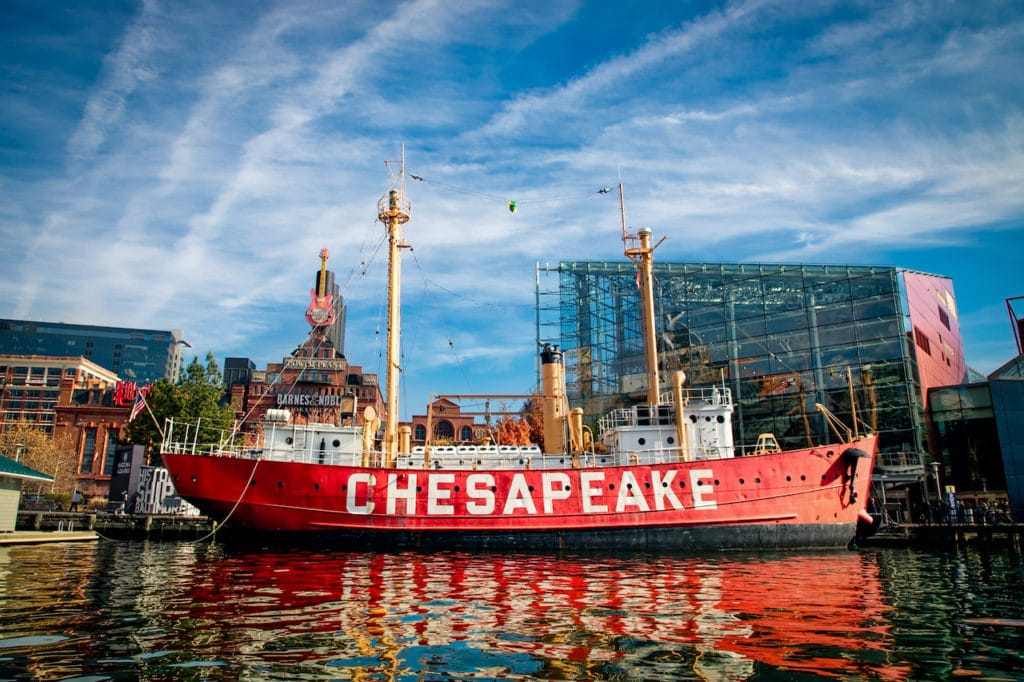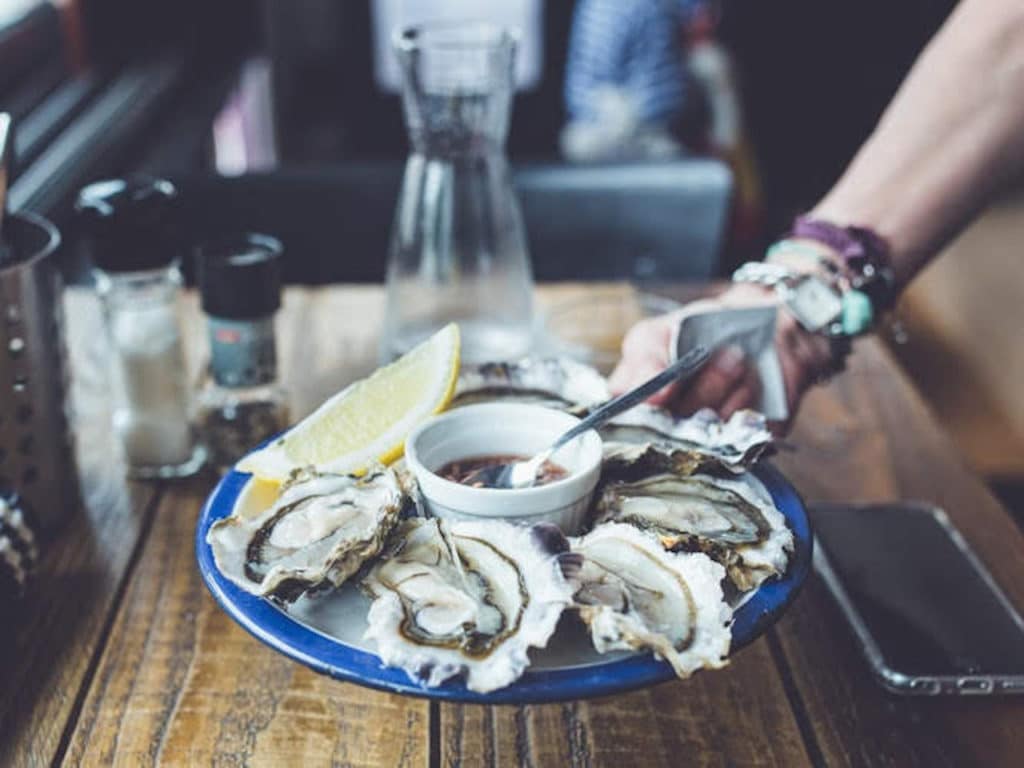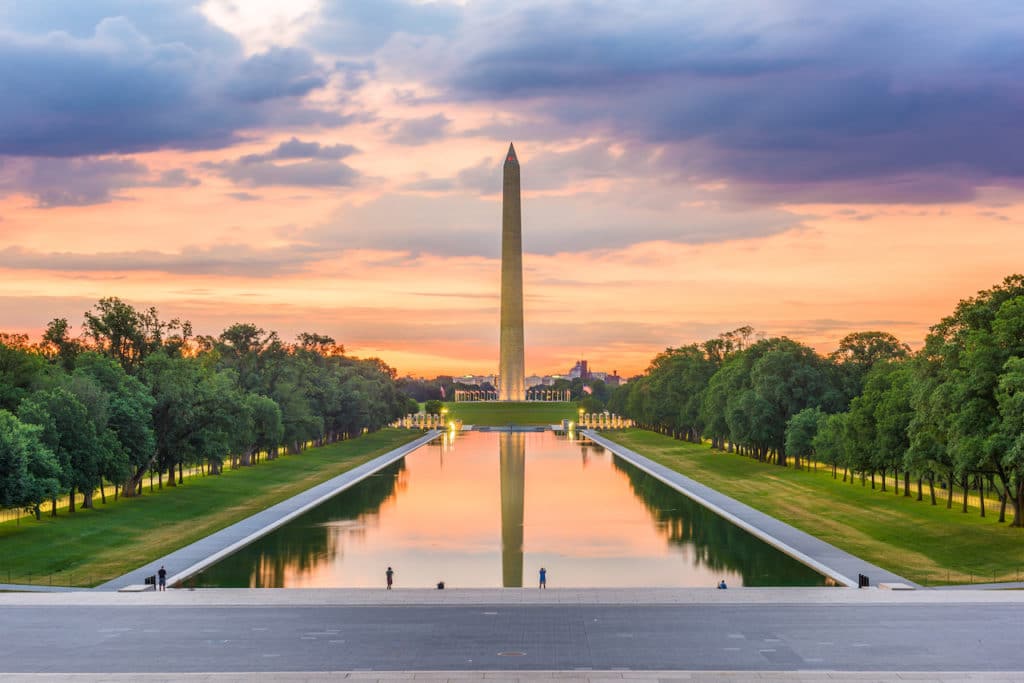
Sure, “Charm City” has a world-famous Inner Harbor, renowned museums and attractions, hip and historic neighborhoods, award-winning restaurants, and endless entertainment options, but there are still a few cons to living in Baltimore. We’ll break them down and let you make the decision of whether or not this place is for you.
The pros of living in Baltimore
1. Chesapeake Bay cuisine

Whether you’re craving fresh oysters on the half shell, a crab feast, or lobster rolls, Baltimore’s Chesapeake Bay cuisine has got you covered. But it’s not all just seafood–foodies can find nationally recognized, award-winning restaurants and chefs, a budding craft brew and cocktail scene, and eclectic ethnic options, as well as a plethora of tasty food festivals.
2. Rich history
Baltimore was founded in 1729, before the United States. How many cities can say that? History buffs will appreciate the rich past of the seaport that once served as a hub for trade to the Caribbean. It’s where Francis Scott Key was inspired to write our country’s national anthem; the final resting place of Edgar Allan Poe; and the birthplace of George Herman “Babe” Ruth. Over 65,000 properties are on the list of National Register of Historic Places, more than in any other US city. Not to mention the historic neighborhoods…
3. Baltimore architecture
Baltimore’s charming neighborhoods are known for their historic row houses, but the factories and mills where workers once toiled have been converted into cool lofts, condos, art studios, galleries, offices, restaurants, and stores. Bonus: Some of them are on the waterfront!
4. Quality education
Baltimore boasts numerous public and private universities and colleges, including the University of Baltimore, the University of Maryland, Loyola University Maryland, and of course, Johns Hopkins University. One of the best-ranked hospitals in the country, The Johns Hopkins Hospital is the teaching hospital and biomedical research facility of Johns Hopkins School of Medicine.
5. Promising job market
While the unemployment rate is at about 5.3 percent (compared to the national unemployment rate of 3.6 percent), a sense of opportunity abounds in Baltimore. The city’s key industries are shipping, auto manufacturing, transportation, and steel processing, but it’s also emerging as one of the top cities for tech startups in the US, according to Forbes magazine.
6. Proximity to Washington, DC

You can take the commuter train to DC in just 45 minutes—half the time it would take to drive the 40 miles. Access to three different airports: BWI Airport in Hanover, Maryland, the Ronald Reagan Washington National Airport, and Dulles International Airport in Washington D.C./Northern Virginia makes traveling (even internationally) a breeze.
Proximity to other major cities
- Philadelphia, PA: The drive from Baltimore to Philadelphia is approximately 2 to 2.5 hours, depending on traffic and exact starting and ending points.
- New York City, NY: The drive from Baltimore to New York City can take around 3 to 4 hours, but travel times can vary significantly based on traffic conditions.
- Richmond, VA: The drive from Baltimore to Richmond, Virginia, is roughly 2 to 2.5 hours, depending on the specific locations within each city.
- Boston, MA: The drive from Baltimore to Boston is a longer journey, taking approximately 6 to 7 hours, depending on traffic and the chosen route.
7. Sports
Oriole Park at Camden Yards is adjacent to the Inner Harbor, and within walking distance to M&T Bank Stadium, where the Super Bowl XLVII Champions, the Ravens play. There’s also a bevy of college teams to root for, and a couple of pro-soccer teams.
8. Relatively affordable
One of the few major cities where middle-class families can comfortably afford to live in the downtown area, Baltimore is the East Coast’s best bargain as far as quality of life and cost of living are concerned.
9. Attractions
Situated on Baltimore’s beautiful waterfront is its downtown centerpiece—the Inner Harbor—surrounded by hotels, restaurants, shops, and attractions, including the National Aquarium, the Fleet of Historic Ships (like the Civil War–era warship USS Constellation), the Maryland Science Center, and Port Discovery Children’s Museum in the historic Fish Market building. And that’s just in the world-famous Inner Harbor! A wealth of art, history, and hands-on family fun options exist throughout the city.
10. “Great place to meet in any season”
Maryland is not extremely north or south, making for a moderate climate with all four seasons. In the spring, Sherwood Gardens blooms with over 80,000 tulips. In the summer, the city comes alive with festivals like HONfest, an annual street fair that celebrates the Baltimorese lifestyle and stereotype. As the chilly air sets in, the indoor entertainment season kicks off with music, theater, and special exhibitions. In the freezing winter, spirits are warmed with Miracle on 34th Street, a holiday lights extravaganza that can be seen from space!
The cons of living in Baltimore
1. Traffic
Surprise, traffic sucks! It’s a big city, what do you expect? On average, commuters spend 30 minutes getting to work and back. If at all possible, avoid rush hour on the outer loop of the Beltway and the accumulation of county commuters on Interstates 695, 95 and 395.
At least the public transportation systems provide alternatives to sitting in traffic. There’s the MTA Metro subway system, the Light Rail, a bus system, a commuter rail system called the MARC Train, a free shuttle called The Charm City Circulator, and Amtrak trains at Penn Station. Baltimore is also very walkable, so you should be able to run errands without leaving your ‘hood too often.
2. Taxes
Taxes in the city of Baltimore are slightly higher than in the surrounding Baltimore County, as it is considered a “politically independent city”. The county has a 2.83 percent income tax rate, while the city’s income tax is 3.2 percent. Property taxes are pretty hard on homeowners, however, there are tax credits that help make owning a home more affordable.
3. Blue laws
Apparently, you can’t buy packaged alcoholic beverages on Sundays, but you can order booze by-the-drink at bars and restaurants, and Baltimore sure has you covered there. Prepare accordingly.
Frequently asked questions about living in Baltimore
Baltimore boasts diverse attractions, including the historic Inner Harbor, the National Aquarium, Fort McHenry, and the Maryland Science Center. Residents also enjoy cultural venues like the Baltimore Museum of Art and the Walters Art Museum.
Baltimore has a varied job market with strengths in healthcare, education, and technology. However, certain industries face challenges, and employment opportunities can vary by sector and neighborhood.
Safety can vary by neighborhood. While some areas experience higher crime rates, others are considered safe. Researching neighborhoods, staying aware of surroundings, and connecting with local community resources can contribute to a safer living experience.
Baltimore has a public transit system, including buses and a light rail, but it may not be as extensive as in some larger cities. Traffic congestion can be a consideration, so residents often use a combination of public transit, walking, and driving.
The cost of living in Baltimore is generally lower than in many other East Coast cities. Housing costs, in particular, can be more affordable. However, it’s important to consider individual lifestyle choices and preferences.
Baltimore experiences all four seasons. Summers can be hot and humid, while winters bring cold temperatures and occasional snow. Spring and fall offer milder weather, making it a city with a diverse climate.
Challenges can include variations in neighborhood safety, occasional traffic congestion, and economic disparities among different communities. Researching neighborhoods, staying informed about local issues, and engaging with the community can help navigate potential challenges.
Baltimore can be a good place to live for those seeking a city with a rich history, cultural attractions, and diverse neighborhoods at a relatively affordable cost. However, challenges such as crime rates, economic disparities among neighborhoods, and public education issues should be considered when evaluating the city as a potential home.
Baltimore has a lot of the same positives and negatives as many major cities, and deciding whether or not to move to Baltimore is your choice. If you think it might be for you, check out apartments for rent on Zumper and find your next apartment before you even move there.



